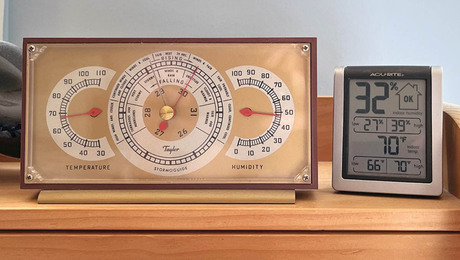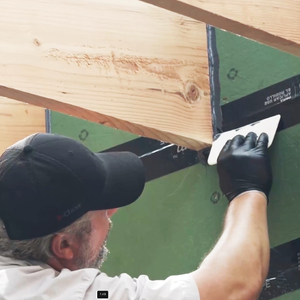Hello All,
While remodeling a bathroom this past spring, I nicked a flex duct in the ceiling and water started pouring out. Quite a bit of moisture in most of the flex duct. It’s probably been this way for a long time
The 1978 ranch house is located in northern Indiana.
Heated with hot water baseboard, Cooled with a heat pump, all ductwork is in the unconditioned attic. Attic is insulated with blown-in cellulose. Most of the insulated flex duct lays on the insulation. I close all the vents in the fall and add 2″ rigid in the returns.
All of the flex will need to be replaced, but I want to solve the issue first. A few options I’ve considered are covering the ducts with insulation, or conditioning the 3000sf attic, or sealing all the vents every fall (not convenient), or running a fan through the sytem in the off-season. The ceiling height inside is too low to move inside the existing conditioned space. Has anyone else encountered this before? Thoughts on solving this issue?
Thanks!


















Replies
You've got one or more air leaks in your ductwork. If you're going to replace them all make sure the seams are sealed with duct sealer after they are taped.
So this is ductwork that is used only for air conditioning?
Presumably what's happening is that air is migrating into the duct in the winter and moisture in the air condenses. The two ways to deal with this are to totally seal the ducts in the winter (more than simply closing the registers) or somehow maintain a modest airflow (at the expense of lost heat).
Air conditioning only, although as a heat pump, it does supplement heat early/late in the heating season.
Thanks, that was my thoughts too...I was hoping for an efficient one time repair for this problem. I'll have to come up with an efficient way to seal the vents. Somewhere around 16 supply and 3 returns.
Running a fan for the life of the home seems like a huge waste of energy.
Another option that occurred to me is to somehow maintain an airflow of "outside" air through the ducts when they are (mostly) closed off.
I assume you're not referring to the exhaust fan duct?
If you use your heat pump for heating, the relatively warm/moist air hits the uninsulated cold duct in the attic and moisture condenses on the duct. If there is a low spot ... it will puddle/collect. In the summer, warm/moist air in the attic will collect on the OUTSIDE of the ducts ... well that's not good either ... you may never readily notice moisture in the insulation until way late in the game when a lot of damage is already done.
Best place for ductwork is ALWAYS w/ in the thermal envelope (under the insulation). BTW ... just say NO! to flex duct ... it's bad news for everyone ... except the contractor's time to install. It's inefficient and inconsistent. It restricts air flow and can allow moisture to collect in low spots. Also ducts should always be well sealed (NO GREY DUCT TAPE, however). Best install for ducts is to run the ductwork and insulate them and place attic insulation OVER (not under) them.
Clewless1
You very effectively erected some strawmen and slew them.
He doesn't have uninsulated ducts so your entire first paragraph addresses a non-issue.
It's obviously not new construction either so best practice doesn't matter, he has what he has. Flex duct is not my favorite but it works just fine here in hot, humid Florida. Our code requires zip ties, silver aluminum duct tape, and mastic on every joint so leakage is typically not an issue.
On old installations, just like any type of duct, time and heat loosen joints. We repair a lot of ducts and replace even more.
Using old school metal insulated metal duct would more than double the cost of AC systems here so it doesn't happen. Ductboard is another item that's priced out of reach of most people and no one does it.